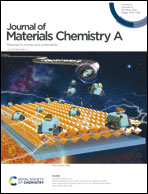Doping mechanism directed graphene applications for energy conversion and storage
Abstract
Due to its ultrabroadband optical absorption, large theoretical surface area, outstanding thermal conductivity and massless electron transportation, graphene has been considered as a prospective candidate in the applications of energy conversion and storage. However, the gapless energy band structure and the limited electrical conductivity restrict the capability of pristine graphene in catalytic reactions, which holds the key in energy conversion applications. Doping graphene with metals and non-metals individually or synergistically could create a highly porous structure and open a critical bandgap to enhance the electrical and photocatalytic properties of graphene, and thus enable a broad range of energy-related applications. Herein, we comprehensively review the recent advances in the research field of doping graphene and related applications in energy conversion and storage. We first introduce the motivation for doping graphene, and then present an in-depth understanding of different doping mechanisms, and discuss the resultant structural modifications and novel properties of doped graphene materials. The review also discusses and compares the principles and the developments in various synthesis methods for efficiently doping different types of graphene materials, including pristine graphene and graphene oxide. Following that, the recent applications of doped graphene in energy conversion and storage devices, namely hydrogen generation, fuel cells, CO2 reduction, secondary batteries, and supercapacitors, are demonstrated. Finally, the remaining challenges in the research field and an outlook on the future research directions of doped graphene for energy-related applications are presented.

- This article is part of the themed collection: Journal of Materials Chemistry A Recent Review Articles


 Please wait while we load your content...
Please wait while we load your content...